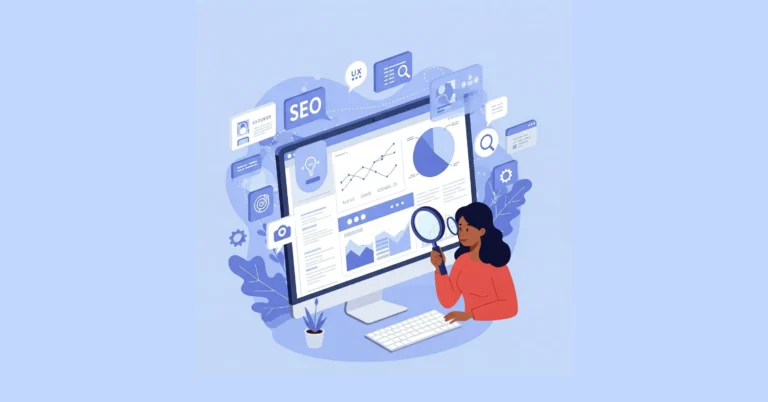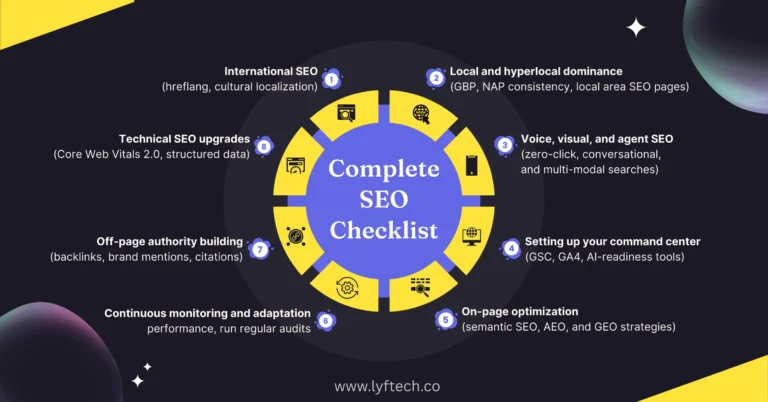If you’re looking to seriously improve your website’s performance, let me introduce one of the most underrated yet super-effective strategies: internal linking.
I know internal linking doesn’t sound as glamorous as getting thousands of backlinks or creating viral content.
But trust me, if you do it right, it can be a total game-changer.
It will not only help your website users navigate your site easily but also help search engines understand your content better.
And the best part?
It can significantly improve your rankings if used strategically.
So, let’s talk about everything you need to know about internal linking—from the basics to some advanced tactics.
What is Internal Linking?
Internal links are simply hyperlinks that connect one page of your website to another page on the same domain.
Think of it as a way to guide both your readers and search engines around your website.
These are different from external links, which take visitors from your site to another website.
Let me give you an example:
- Internal Link: Linking from one blog post to your services page.
- External Link: Linking from your blog post to a source like “Forbes” or “Wikipedia.”
Internal links serve multiple purposes and can be found in various places on your website.
Let’s break down the types of internal links you can use.
Types of Internal Links
- Navigational Links: These are usually found in your main menu, footer, or sidebar. They guide users to key pages like your homepage, about page, or product categories.
- Contextual Links: These are links embedded within your content, such as blog posts or articles. They guide readers to related or relevant content that might interest them.
- Footer Links: You’ll find these at the bottom of your webpage. They often link to essential but boring pages like FAQs, privacy policies, or other utility pages.
- Sidebar Links: Appearing in the sidebar, these links help direct readers to popular posts, categories, or other related content.
Each of these types of links plays a unique role in guiding search engines and users around your website.
Why is Internal Linking Important for SEO?
Alright, let’s see why internal linking is such a big deal for SEO. Here are some of the most important reasons:
1. Improves Crawlability and Indexation
Search engines use bots (or spiders) to crawl your website.
Think of internal links as a roadmap for these bots, showing them where they should go next.
When you use internal links effectively, you’re making it easier for search engines to discover and index all your pages.
Without proper internal links, some pages might just get ignored by search engines—which is not ideal!
2. Builds Contextual Relationships
When you link related content together, it signals to Google that these pages are connected.
This helps search engines understand your content better and can improve your topical authority.
3. Passes Link Equity (PageRank)
Have you heard of “link juice”?
It’s essentially the authority or value that one page passes to another through links.
When you have a high-authority page (like one with lots of backlinks), internal links can help distribute that link equity to other pages on your site.
This way, the “juice” gets spread around, boosting the ranking power of multiple pages.
4. Enhances User Experience
At the end of the day, SEO is about providing value to your users.
Internal links guide your visitors to other valuable content on your site, which can keep them engaged longer.
Longer site visits and lower bounce rates send positive signals to search engines, which can give your rankings a boost.
5. Prevents Orphan Pages
Orphan pages are pages that have no internal links pointing to them.
Essentially, they’re floating out in the ether, undiscoverable by search engines and users.
Having a well-thought-out internal linking strategy will prevent pages from becoming orphaned, ensuring every piece of content is accessible.
Best Internal Linking Strategy in 2025
Here’s how you can build an effective internal linking strategy that both search engines and users will love.
1. Identify Your Most Important Content (Pillar Pages)
The first thing you want to do is identify your most valuable content—often called pillar pages.
These are the cornerstone pieces of your site—the comprehensive guides, service pages, or high-converting landing pages.
For example, if you run a health blog, your pillar content might be “The Ultimate Guide to a Healthy Lifestyle.”
How to Optimize Pillar Pages:
- Add 10-15 internal links pointing to each pillar page.
- Use keyword-rich anchor text that’s related to the content.
- Link to pillar pages from high-authority pages on your site.
2. Use Topic Clusters and Hub-and-Spoke Models
A great way to organize your internal linking is by using the topic cluster or hub-and-spoke model.
In this structure, your pillar page acts as the hub, while related content acts as the spokes.
Each spoke links to the pillar page and vice versa.
For instance:
- Pillar Page: “SEO Basics: A Beginner’s Guide”
- Cluster Topics: “How to Optimize Title Tags,” “Importance of Keyword Research,” “On-Page vs. Off-Page SEO”
This helps create a clear topic hierarchy that makes sense for both users and search engines.
3. Add Contextual Links
Contextual links are super important.
These links are placed directly in your content, guiding readers to other related pages that they’ll find useful.
Here’s a quick example:
Imagine you’re writing a post about “The Best Tools for Email Marketing.”
It’s a good idea to add an internal link to a related post, like “Top Email Marketing Strategies for Beginners.”
Best Practices for Contextual Links:
- Avoid inserting links where they feel forced. The flow should feel natural to the reader.
- Don’t use generic phrases like “click here.” Instead, use descriptive anchor text, such as “learn more about email marketing.”
- Aim for 5-10 internal links per 2,000 words of content.
4. Avoid Orphan Pages
An orphan page is a page on your site that has no internal links pointing to it.
Without internal links, search engines won’t know these pages exist.
Tools like Google Search Console or Screaming Frog can help you identify orphan pages.
Once you find them, be sure to add links from relevant content to these pages.
5. Leverage High-Authority Pages
If you’ve got pages on your site with lots of backlinks or authority, use them to boost other pages.
Linking from a high-authority page to a lesser-known page helps spread the SEO love.
How to Find High-Authority Pages:
- Use tools like Ahrefs or Semrush to analyze your backlinks.
- Look for pages that have the highest number of referring domains.
6. Audit and Update Old Content
Don’t let your old content go to waste.
Make it a habit to regularly audit your existing pages to:
- Fix broken links.
- Add internal links to newly published content.
- Remove unnecessary links or update redirects.
7. Keep Crawl Depth in Check
Crawl depth refers to the number of clicks it takes to reach a page from your homepage.
Ideally, no page on your site should be more than three clicks away from the homepage.
Tips to Reduce Crawl Depth:
- Link new pages from the homepage or category pages.
- Use breadcrumb navigation to keep links organized.
Technical SEO Considerations for Internal Linking
1. Use Dofollow Links
Make sure all internal links are do-follow unless you have a specific reason not to pass link equity.
For example, pages like login screens or checkout pages don’t need link equity.
2. Fix Redirect Chains
Redirect chains are a big no-no.
This happens when one page redirects to another before reaching the final page.
Always ensure links point directly to the final URL to save crawl budget and improve page loading times.
Advanced Internal Linking Strategies
1. Optimize for Long-Tail Keywords
Internal linking is also a great opportunity to rank for long-tail keywords.
When you add an internal link, consider using long-tail keywords in the anchor text.
For example, instead of just linking to a page with “SEO guide,” try “comprehensive guide to mastering SEO in 2025.”
2. Place Links Higher on the Page
Did you know links placed higher on a page often carry more SEO weight?
Try to include at least one or two internal links within the first 100 words of your content to signal their importance.
3. Create a Related Posts Section
Add a “Related Posts” section at the bottom of your articles.
This not only helps keep users engaged but also boosts internal linking.
Common Mistakes to Avoid
Let’s talk about some common pitfalls to avoid when it comes to internal linking:
- Keyword Stuffing in Anchor Text
Don’t over-optimize your anchor text. This can result in penalties from Google. - Too Many Links
Adding too many links in a single post can dilute their SEO value. - Linking Irrelevant Pages
Make sure every internal link adds genuine value to the reader. - Broken Links
Regularly audit your site to fix any broken internal links.
FAQs About Internal Linking
How Many Internal Links Should I Include in a Blog Post?
Aim for 5-10 internal links per 2,000 words. But remember quality over quantity—make sure they’re relevant and add value.
What is Anchor Text, and Why is it Important?
Anchor text is the clickable text of a hyperlink. It provides context about the linked page, both for users and search engines.
Can Internal Links Impact Rankings?
Absolutely. Internal links distribute link equity, improve crawlability, and enhance user experience—all of which contribute to better rankings.
Summary
Internal linking might seem like a small part of SEO, but it’s actually one of the most powerful tools at your disposal.
By organizing your content effectively, using smart anchor text, and making sure every page gets the attention it deserves, you can boost both your rankings and user engagement.
And remember—internal linking isn’t just about SEO metrics. It’s about providing a better, more intuitive experience for your readers.
Start implementing these strategies today, and watch as your rankings and traffic take off!
Want to take your SEO game even further?Make sure to check out my comprehensive guide on On-Page SEO Best Practices for even more actionable tips and insights!





